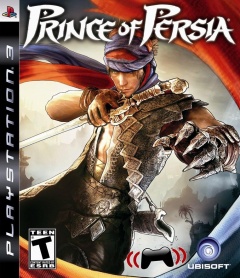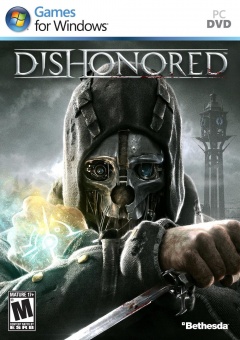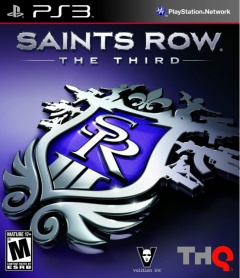First Hour Reviews
Luigi's Mansion: Dark Moon
Luigi has strangely found his niche in the Mario universe as the ghostbusting, mansion tip-toeing brother. Why Nintendo and Shigeru Miyamoto decided to make a GameCube tech demo out of a ghostly mansion and then have it star Luigi may be a question for the ages, but 12 years later we are here with its sequel, Luigi’s Mansion: Dark Moon for the 3DS.
It’s been a decade since I played the original Luigi’s Mansion, but I remember it being a charming, if repetitive experience highlighted by Charles Martinet’s incredible voicing of a freaked out Luigi. With the Wii U in seemingly more need of quality software than the 3DS, I’m surprised some tablet-utilizing version of Dark Moon didn’t show up on the console, but the likelihood of me playing the portable version is much higher, so I personally appreciate the 3DS release. Let’s play.
Rune Factory: Tides of Destiny
It’s been a few... months since the last first hour review, but that’s okay, I’m happy with everything else I’ve been doing with my extra time, and you’re probably happy because you’re reading this and not the comment section of my Persona 3: FES review.
So while I have your attention, let’s talk quickly about Rune Factory: Tides of Destiny. Rune Factory is a shoot-off series of Harvest Moon, and I’ve talked about both sets of games quite a bit here. I’ve never really enjoyed console Harvest Moon games since the Nintendo 64, and never played the previous console Rune Factory game, so I decided to take a chance and try out Tides of Destiny for the PlayStation 3 (also available on the Wii). Honestly, part of me just wanted a game I could play in front of the kids since Uncharted 2 and Metal Gear Solid 4 don’t go over very well.
This will be an incredibly informal first hour, as I didn’t even bother to take notes, but I suppose if you’re looking for a formal first hour review you would have gone somewhere else a long time ago.
Ni no Kuni: Wrath of the White Witch
When I first heard that Level-5 and Studio Ghibli were teaming up to make a JRPG in all sense of the acronym, I thought the following: wow, so awesome, but never gonna reach the States. But here I am, covering the first hour of Ni no Kuni: Wrath of the White Witch. Call me surprised, call me ecstatic.
To start, I am a huge fan of what both companies produce, ever since seeing Studio Ghibli’s Kiki’s Delivery Service, Howl’s Moving Castle, and Spirited Away (still haven’t seen Ponyo or Arrietty yet, wah) and losing myself in the wonder that is Miyazaki’s limitless imagination. On the flipside, Level-5 has been in my life for many years now, giving me fantastic timesinks like Dark Cloud 2, Dragon Quest VIII, Rogue Galaxy (yes, I enjoyed Rogue Galaxy, so back off), and more recently the Professor Layton puzzle games. Level-5 is great at stuffing games with things to do, and Studio Ghibli’s strength is in telling a story where rules do not apply, and together it seems like they could create something powerfully wonderful. Maybe even take over the world. I love what these companies do so much that I purposely went out and bought a PlayStation 3 to play Ni no Kuni.
With that heavy bias out of the way now, let’s see what I think of their joint concoction.
Ratchet & Clank: All 4 One
 Since picking up copies of PC Gamer back in the mid 90s, I’ve only ever played a few game demos that actually made me want to buy the final product. The free demo should be the ultimate introduction to the game, the perfectly crafted first hour. But for whatever reason, being tossed into the middle of the game just doesn’t sit right with me. Whether it’s out of context cutscenes or repetitive gameplay, it doesn’t take me much to cross it off my list.
Since picking up copies of PC Gamer back in the mid 90s, I’ve only ever played a few game demos that actually made me want to buy the final product. The free demo should be the ultimate introduction to the game, the perfectly crafted first hour. But for whatever reason, being tossed into the middle of the game just doesn’t sit right with me. Whether it’s out of context cutscenes or repetitive gameplay, it doesn’t take me much to cross it off my list.My only previous experience with the Ratchet & Clank series was a demo for one of the PS2 titles (it’s hard to nail down which one since they were released every 12 months like clockwork) which opened with what felt like a 20 minute cutscene. Unskippable cutscene. I didn’t even make it to the gameplay before the console was reset out of anger and annoyance. I don’t play a Ratchet & Clank demo to learn about its amazing storyline, I play for whatever shooting/platforming/clanking it has to offer.
So here I am with the first hour of Ratchet & Clank: All 4 One for the PlayStation 3. Released late last year, it’s still the newest game in the series... no, wait. Ratchet & Clank: Full Frontal Assault was released last week. So now we’re playing an out-of-date version of a has-been series. Here we go.
Prince of Persia
 The success of Prince of Persia: The Sands of Time completely rejuvenated a left for dead franchise. From a series that was known for its challenging, timed gameplay, rose a 3D incarnation that was nearly beloved by both the gaming press and gamers themselves. Setting the gears in motion for sequels, spinoffs, and a movie, The Sands of Time was both a trendsetter for many future titles and an acknowledgement to its roots.
The success of Prince of Persia: The Sands of Time completely rejuvenated a left for dead franchise. From a series that was known for its challenging, timed gameplay, rose a 3D incarnation that was nearly beloved by both the gaming press and gamers themselves. Setting the gears in motion for sequels, spinoffs, and a movie, The Sands of Time was both a trendsetter for many future titles and an acknowledgement to its roots.A few years after its immediate trilogy sputtered off, Ubisoft tried to remake the prince once again with Prince of Persia, no subtitle. Much like the NES Ninja Gaiden and the Xbox Ninja Gaiden, Prince of Persia was annoyingly named the exact same as the original game twenty years its predecessor. But if fans were expecting an even closer imitation of the original, they would be quite surprised with the bigger changes made by Ubisoft.
Prince of Persia (2008, not 1989) received mixed reviews with attention to the excellent art and animation, but some disdain towards the game’s reported simple difficulty. What attracted me to reviewing the game’s first hour was definitely the art style. Borrowing the watercolor look from Okami was definitely a brave move by a generally conservative Ubisoft, and I am hoping some of that creativity might have run over to the parkour and fighting elements of the game. Let’s take a look.
Retro City Rampage
 Ladies and gentlemen, we are experiencing a full-blown Easter Egg epidemic. In just the last month, Dishonored re-enacted a scene from PC classic Thief: The Dark Project. The newest World of Warcraft expansion contains homages to everything from Battletoads to Harvest Moon to Star Fox.
Ladies and gentlemen, we are experiencing a full-blown Easter Egg epidemic. In just the last month, Dishonored re-enacted a scene from PC classic Thief: The Dark Project. The newest World of Warcraft expansion contains homages to everything from Battletoads to Harvest Moon to Star Fox.There are even veritable egg trails: Torchlight II pays homage to Borderlands 2 which references Dark Souls. If this trend continues, it won’t be long until we have a Six Degrees of Kevin Bacon on our hands, counting references back to either “Cake is a lie” or “Arrow in the knee.”
And Retro City Rampage isn’t helping matters. Released last week on PlayStation Network and Steam (and coming soon for XBLA and WiiWare), this Grand Theft Auto “demake” touches on dozens of classic NES-era videogames, if not hundreds. The launch trailer alone portends a never-ending assault of sly winks, like a pirate blinking War and Peace in morse code.
Dishonored
 Dishonored, the new property published by Bethesda (The Elder Scrolls; Fallout) and developed by Arkane Studios (Dark Mesiah; Bioshock 2), is a brave and original story looking to enter into a decaying console cycle – the time when the sequel and spinoff reign supreme. It has to be said, the sights are firm and the course is true; Dishonored is looking to contend for Game of the Year status – and so it should. Arkane Studios has talent from across the globe, and a laundry list of prior experience. From Bioshock to Half-Life 2 to Deus Ex, and many more, Arkane’s capability holds great repute.
Dishonored, the new property published by Bethesda (The Elder Scrolls; Fallout) and developed by Arkane Studios (Dark Mesiah; Bioshock 2), is a brave and original story looking to enter into a decaying console cycle – the time when the sequel and spinoff reign supreme. It has to be said, the sights are firm and the course is true; Dishonored is looking to contend for Game of the Year status – and so it should. Arkane Studios has talent from across the globe, and a laundry list of prior experience. From Bioshock to Half-Life 2 to Deus Ex, and many more, Arkane’s capability holds great repute.Dishonored sets off to be the spiritual successor to the very franchises that inspired it and you would be hard-pressed to find a reason why it does not fit the bill. At its core, Dishonored is a first-person stealth action game. You are able to sneak around quietly, hit confrontation head-on, or some other combination of the two. The level of freedom here is something that would make any long-time Deus Ex fan smile. It’s not just about the gameplay, though – the level of presentation on display is top notch.
Before getting into the review-proper, I want to touch on the design and visual presentation; its uniqueness begs prying eyes to observe. Dunwall, the city setting in Dishonored, is designed by the very same man who imagined City 17 in Half-Life 2. Visually, I get the sensation that Arkane started with something relatively gritty, and then moved the entire art-style in the direction of pastel and caricature. It’s just utterly dripping with style and brave design choices. The character design in particular is especially reminiscent of old political cartoon artwork, with all the exaggerated features necessary to convey a character without words.
Now, it’s not all sunshine and roses when it comes to the presentation. There are elements of the game that feel somewhat dated. While the character design is a pure joy of originality, the animations leave something to be desired. I’m never left with the sensation that these are alive, even for a moment. There’s also not much in the way of post-effects being leveraged. You have god-rays, dynamic shadows, and that’s about it. And while the artwork is incredibly balanced and fitting to itself, I found myself reaching for my video card’s anti-aliasing controls in short order just to get everything to sit better with the art style. Neither the MLAA or FXAA solutions quite cut it – the jaggies on display just detracted from the pastel effect.
Saints Row: The Third
 Saints Row 2 was already over the top. After an epic prison bust you then shoot up a courthouse and spray poop on rich people’s homes. It was crazy and pretty fun, and seemed worth playing beyond the first hour just to see what the developers could cook up.
Saints Row 2 was already over the top. After an epic prison bust you then shoot up a courthouse and spray poop on rich people’s homes. It was crazy and pretty fun, and seemed worth playing beyond the first hour just to see what the developers could cook up.Volition wanted to go bigger though, so they made Saints Row: The Third. Within days of release, the game was already famous for one of its weapons: The Penetrator, a giant purple dildo with realistic... dildo physics. But from my time with the game, I can promise you they really went to town with an adrenaline-pumping, action set-piece heavy first hour that simply blows the offerings Saints Row 2 put up.
So let’s take a look at the first hour of Saints Row: The Third, with this hour’s minute by minute section being sponsored by the absurdity of Volition, highlighting the crazy levels the game goes beyond even its predecessor.
Borderlands 2
 The original Borderlands was a breakout hit for Gearbox Software in 2009. The cel-shaded mission-driven FPS-meets-Diablo-style super-hyphenated lootfest was a quirky and endearing departure from more serious franchises like Halo, Call of Duty, and Medal of Honor. Instead of pushing the same "OMG 40 modes of multiplayer!" angle that had gotten so popular, it chose to design around the concept of 4 player co-op gameplay. And it did so with relish.
The original Borderlands was a breakout hit for Gearbox Software in 2009. The cel-shaded mission-driven FPS-meets-Diablo-style super-hyphenated lootfest was a quirky and endearing departure from more serious franchises like Halo, Call of Duty, and Medal of Honor. Instead of pushing the same "OMG 40 modes of multiplayer!" angle that had gotten so popular, it chose to design around the concept of 4 player co-op gameplay. And it did so with relish.With the success of Borderlands, Gearbox was able to move beyond porting other studios games and their now languishing Brothers in Arms property. Instead of working on others titles, they had a verifiable sales behemoth of their own making. But with great power comes great responsibility. Games like Borderlands often struggle because harried gamers don't give them a chance. In a retail sea awash with sequels and spinoffs, new IPs often struggle to gain traction. Because of this, those gamers who do latch onto a new piece of software, often feel entitled. Afterall, they took a chance on an unknown, thus contributing to its success. These types of fans are a double edged sword. They are often some of the most vocal in supporting a game and getting the word out. But they are also frequently among the hardest to please with sequels, as the developers try to thread the needle of offering new and interesting content, while staying true to the experience of earlier games.
This is the environment that Gearbox developed Borderlands in. How does one replicate the success of a game whose popularity was so driven by its quirky uniqueness? In other words, how does one make a game that is the same, but still unique? If I had the answer... if anyone had the answer, they would most likely be very rich. It's a moving target. The question is whether Gearbox is as accurate at hitting that target as some of the guns they designed for the game. And if they are, can they relay that fact to a gamer in the first 60 minutes? Let's take a look at Borderlands 2 and find out.
The Last Story
 Operation Rainfall strikes again.
Operation Rainfall strikes again.The fan campaign that convinced Nintendo of America to actually publish a hardcore Wii game this year can now celebrate its second victory. Another high profile Wii game found its way to the USA last month, though leery NOA decided to pass the risk of publishing to Xseed Games this time around.
The Last Story is the latest game from director Hironobu Sakaguchi and composer Nobuo Uematsu, the duo that made Final Fantasy an institution (and vice versa). It’s hard to believe a publisher would refuse to localize a game with those two names attached, but Nintendo’s no stranger to unbelievable decisions.
I'd been waiting for this game to hit the USA for over two years. Then I had to wait even longer when my copy was put on backorder for a month after it finally launched. Here’s hoping it was worthwhile.



